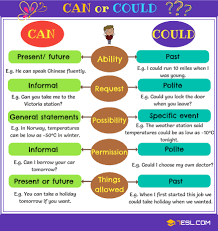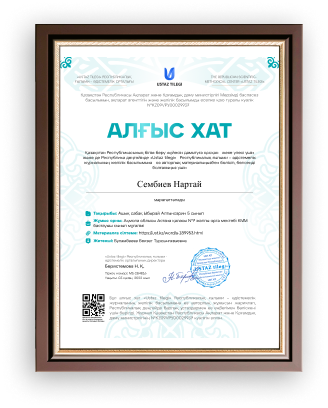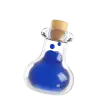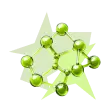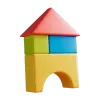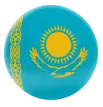
|
Unit of a long term plan: Entertainment and media |
School-lyceum №40 |
||
|
Date: 29.01.2025 |
Teacher name: Kozhabergen Gabit |
||
|
Grade: 7 |
Number present: |
absent: |
|
|
Lesson title |
Ability: can, could. Questions with How...? |
||
|
Learning objectives |
7.6.5.1 use questions including questions with whose, how often , how long and a growing range of tag questions on a growing range of familiar general and curricular topics 7.6.13.1 use modal forms including mustn’t (prohibition), need (necessity) should (for advice) on a range of familiar general and curricular topics |
||
|
Lesson objectives |
Learners will be able to: • Learn can and could for ability in the present and past. • Learn about questions using How ...? • Practise asking and answering questions using can, could and How ...? |
||
|
Plan |
|||
|
Stages / Time |
Teachers actions |
Students actions |
Assessment criteria |
Resources |
|
Start
|
Organization moment : 1.Greeting. Ask about the weather. Warm-up • Refer students back to the reading text on page 50. Read the first sentence with the class and ask which verb refers to ability (could). • Elicit or explain that we use can to talk about ability in the present, and could to talk about ability in the past. Lead - In Pupils watch video about differences can and could
|
“The wish flower” method helps to start the lesson with good wishes to each other. The aim: To develop Ss speaking skills and create fndly atmosphere Efficiency: By wishing each other they feel better and feel the support of others Students watch video and say different words from the differences can and could |
At the organization moment T tries to award active Ss. «The praise» method is used to evaluate Ss with phrases like: “Good job! Well done!” Formative Assessment
Good job! |
Pictures worksheet https://youtu.be/BBq0hWsrC6o Student’s book |
|
M
|
Ex:1 P:67 • Explain that students are going to focus on can and could in the context of the text LANGUAGE NOTE We use can for ability in the present and could for ability in the past: I can swim now. I could swim when I was three. NOT I can swim when I was three. The verbs can and could do not add -s after he, she and it: He can dance. NOT He cans dance. After can and could, we use the infinitive without to: I can speak English. NOT I can to speak English. Point out that the negative forms are can’t and couldn’t: He can’t paint. NOT He doesn’t can paint Ex: 2 P: • Students choose the correct words to complete the rules. In a weaker class, do this as a class activity for support. • In a stronger class, ask for an example of what students could / couldn’t do in the past and what they can / can’t do now. Differentiation: «Verbal support» method is used to help Students use new words in the text. Ex: 3 P: 67 • Tell students to read all the sentences carefully before they start to complete them to check they understand the context. They should think about whether the sentences refer to the present or the past. Ex: 4 P: 67 • Once students have matched the question halves, check answers and ask students to ask and answer pairs. |
Students complete the sentences. ANSWERS 1 can’t do 2 could 3 couldn’t Students choose the correct words ANSWERS 1 without 2 can 3 can’t 4 present 5 past Students complete the sentences with the words in the box. ANSWERS 1 could 2 couldn’t 3 can 4 couldn’t 5 can’t Students match and make questions. Then ask and answer questions with a partner. ANSWERS 1 e How far can you swim? 2 f How strict is your teacher? 3 b How often do you go to the cinema? 4 g How intelligent are your friends? 5 a How many people are in your class? 6 c How much cola do you drink? 7 d How tall are you? |
Assessment criteria - Learn can and could for ability in the present and past. Descriptor: - complete the sentences with the can and could Assessment criteria: - Learn about questions using How ...? Descriptor: - match and make questions. Then ask and answer questions -Make CCQ questions Yes / No |
Card Worksheet Students book |
|
End |
Home task: Ex: 1 P: 49 WB |
|
Poster Success KWL chart
|
|
жүктеу мүмкіндігіне ие боласыз
Бұл материал сайт қолданушысы жариялаған. Материалдың ішінде жазылған барлық ақпаратқа жауапкершілікті жариялаған қолданушы жауап береді. Ұстаз тілегі тек ақпаратты таратуға қолдау көрсетеді. Егер материал сіздің авторлық құқығыңызды бұзған болса немесе басқа да себептермен сайттан өшіру керек деп ойласаңыз осында жазыңыз
Ability: can, could. Questions with How...?
Ability: can, could. Questions with How...?
|
Unit of a long term plan: Entertainment and media |
School-lyceum №40 |
||
|
Date: 29.01.2025 |
Teacher name: Kozhabergen Gabit |
||
|
Grade: 7 |
Number present: |
absent: |
|
|
Lesson title |
Ability: can, could. Questions with How...? |
||
|
Learning objectives |
7.6.5.1 use questions including questions with whose, how often , how long and a growing range of tag questions on a growing range of familiar general and curricular topics 7.6.13.1 use modal forms including mustn’t (prohibition), need (necessity) should (for advice) on a range of familiar general and curricular topics |
||
|
Lesson objectives |
Learners will be able to: • Learn can and could for ability in the present and past. • Learn about questions using How ...? • Practise asking and answering questions using can, could and How ...? |
||
|
Plan |
|||
|
Stages / Time |
Teachers actions |
Students actions |
Assessment criteria |
Resources |
|
Start
|
Organization moment : 1.Greeting. Ask about the weather. Warm-up • Refer students back to the reading text on page 50. Read the first sentence with the class and ask which verb refers to ability (could). • Elicit or explain that we use can to talk about ability in the present, and could to talk about ability in the past. Lead - In Pupils watch video about differences can and could
|
“The wish flower” method helps to start the lesson with good wishes to each other. The aim: To develop Ss speaking skills and create fndly atmosphere Efficiency: By wishing each other they feel better and feel the support of others Students watch video and say different words from the differences can and could |
At the organization moment T tries to award active Ss. «The praise» method is used to evaluate Ss with phrases like: “Good job! Well done!” Formative Assessment
Good job! |
Pictures worksheet https://youtu.be/BBq0hWsrC6o Student’s book |
|
M
|
Ex:1 P:67 • Explain that students are going to focus on can and could in the context of the text LANGUAGE NOTE We use can for ability in the present and could for ability in the past: I can swim now. I could swim when I was three. NOT I can swim when I was three. The verbs can and could do not add -s after he, she and it: He can dance. NOT He cans dance. After can and could, we use the infinitive without to: I can speak English. NOT I can to speak English. Point out that the negative forms are can’t and couldn’t: He can’t paint. NOT He doesn’t can paint Ex: 2 P: • Students choose the correct words to complete the rules. In a weaker class, do this as a class activity for support. • In a stronger class, ask for an example of what students could / couldn’t do in the past and what they can / can’t do now. Differentiation: «Verbal support» method is used to help Students use new words in the text. Ex: 3 P: 67 • Tell students to read all the sentences carefully before they start to complete them to check they understand the context. They should think about whether the sentences refer to the present or the past. Ex: 4 P: 67 • Once students have matched the question halves, check answers and ask students to ask and answer pairs. |
Students complete the sentences. ANSWERS 1 can’t do 2 could 3 couldn’t Students choose the correct words ANSWERS 1 without 2 can 3 can’t 4 present 5 past Students complete the sentences with the words in the box. ANSWERS 1 could 2 couldn’t 3 can 4 couldn’t 5 can’t Students match and make questions. Then ask and answer questions with a partner. ANSWERS 1 e How far can you swim? 2 f How strict is your teacher? 3 b How often do you go to the cinema? 4 g How intelligent are your friends? 5 a How many people are in your class? 6 c How much cola do you drink? 7 d How tall are you? |
Assessment criteria - Learn can and could for ability in the present and past. Descriptor: - complete the sentences with the can and could Assessment criteria: - Learn about questions using How ...? Descriptor: - match and make questions. Then ask and answer questions -Make CCQ questions Yes / No |
Card Worksheet Students book |
|
End |
Home task: Ex: 1 P: 49 WB |
|
Poster Success KWL chart
|
|

шағым қалдыра аласыз



